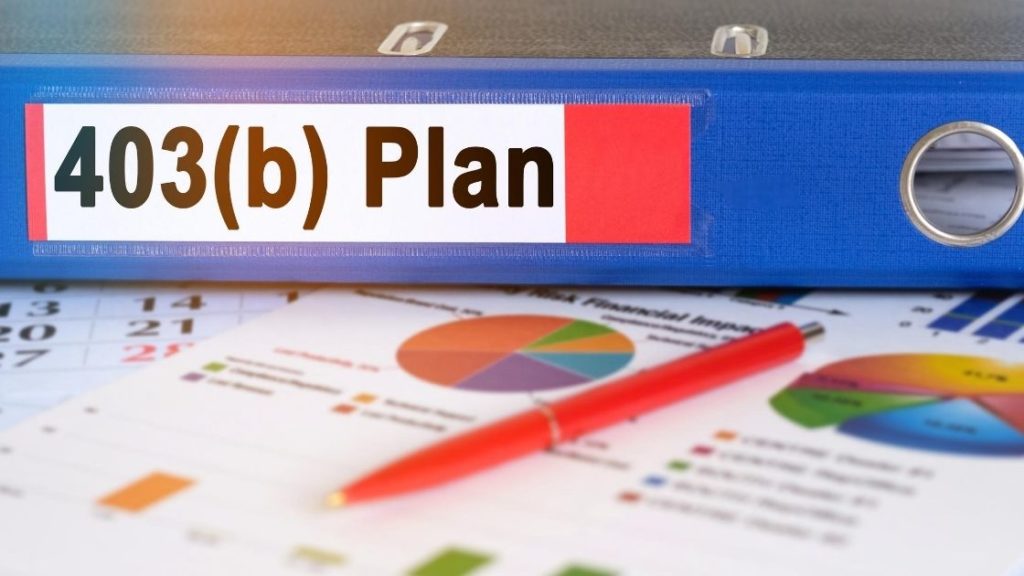403(b) Plans: The Basics

If you are like many Americans, you likely have an employer-sponsored retirement plan. This is the second article in a three-part series about the basics of 401k, 403b, and Defined Benefit Plans.
Retirement plans established under Section 403(b) of the Internal Revenue Code, commonly referred to as 403(b) plans or “tax-sheltered annuities,” have become a popular type of employer-sponsored retirement plan.
What is a 403(b) plan?
A 403(b) plan is a retirement savings plan, sponsored by a tax-exempt organization or public school, that offers significant tax benefits while helping you plan for the future. You contribute to the plan via payroll deduction, which can make it easier for you to save for retirement. One important feature of a 403(b) plan is your ability to make pre-tax contributions to the plan. Pre-tax means that your contributions are deducted from your pay and transferred to the 403(b) plan before federal (and most state) income taxes are calculated. This reduces your current taxable income — you don’t pay income taxes on the amount you contribute, or any investment gains on your contributions until you receive payments from the plan.
You may also be able to make Roth contributions to your 403(b) plan. Roth 403(b) contributions are made on an after-tax basis, just like Roth IRA contributions. Unlike pre-tax contributions to a 403(b) plan, there’s no up-front tax benefit — your contributions are deducted from your pay and transferred to the plan after taxes are calculated. But a distribution from your Roth 403(b) account is entirely free from federal income tax if the distribution is qualified. In general, a distribution is qualified only if it satisfies both of the following requirements:
- It’s made after the end of a five-year waiting period
- The payment is made after you turn 59½, become disabled, or die
Generally, you can contribute up to $19,500 ($26,000 if you’re age 50 or older) to a 403(b) plan in 2020 (unless your plan imposes lower limits). If your plan permits, and you have 15 or more years of service, you may also be able to make special catch-up contributions to the plan, in addition to the age 50 catch-up contribution.
If your plan allows Roth 403(b) contributions, you can split your contribution between pre-tax and Roth contributions any way you wish.
When can I contribute?
While a 403(b) plan can make you wait up to a year to participate, many plans let you to begin contributing with your first paycheck. Some plans also provide for automatic enrollment. If you’ve been automatically enrolled, make sure to check that your default contribution rate and investments are appropriate for your circumstances.
What about employer contributions?
Employers don’t have to contribute to 403(b) plans, but many will match all or part of your contributions. Try to contribute as much as necessary to get the maximum matching contribution from your employer. This is essentially free money that can help you pursue your retirement goals. Note that your plan may require up to six years of service before your employer matching contributions are fully vested (that is, owned by you), although most plans have a faster vesting schedule.
Should I make pre-tax or Roth contributions (if allowed)?
If you think you’ll be in a higher tax bracket when you retire, Roth 403(b) contributions may be more appealing, since you’ll effectively lock in today’s lower tax rates (and future withdrawals will generally be tax-free). However, if you think you’ll be in a lower tax bracket when you retire, pre-tax 403(b) contributions may be more appropriate because your contributions reduce your taxable income now. Your investment horizon and projected investment results are also important factors.
What else do I need to know?
- Your contributions, pre-tax and Roth, are always 100% vested (i.e., owned by you).
- If your plan allows loans, you may be eligible to borrow up to one half of your vested 403(b) account (to a maximum of $50,000) if you need the money. Due to the Coronavirus Aid, Relief, and Economic Security (CARES) Act, loans of up to 100,000 or 100% of your vested account balance may be allowed between March 27, 2020, and September 22, 2020.
- You may also be able to make a hardship withdrawal if you have an immediate and heavy financial need. But this should be a last resort — hardship distributions are generally taxable to you.
- Distributions from your plan before you turn 59½ (55 in some cases), may be subject to a 10% early distribution penalty unless an exception applies. Due to the CARES Act, penalty-free withdrawals of up to $100,000 may be allowed in 2020 for qualified individuals affected by COVID-19. Individuals will be able to spread the associated income over three years for income tax purposes and will have up to three years to reinvest withdrawn amounts.
- You may be eligible for an income tax credit of up to $1,000 for amounts you contribute, depending on your income.
- Your assets are generally fully protected in the event of your, or your employer’s, bankruptcy.
- While your participation in a 403(b) plan has no impact on your ability to contribute to an IRA (Roth or traditional), it could impact your ability to make deductible contributions to a traditional IRA.
- Many 403(b) plans let you direct the investment of your account. Your employer provides a choice of funding arrangements (typically, mutual funds or annuity contracts issued by an insurance company). But it’s your responsibility to choose the investments most suitable for your retirement objectives.
If you missed the first article in our three-part series about 401(k) plan basics, you can find it here.
Come back to learn about Defined Benefit Plans.
At Austin Asset, we are Fee-Only Financial Advisors. We seek to bring clarity and purpose to wealth through authentic and enduring relationships. For Life.